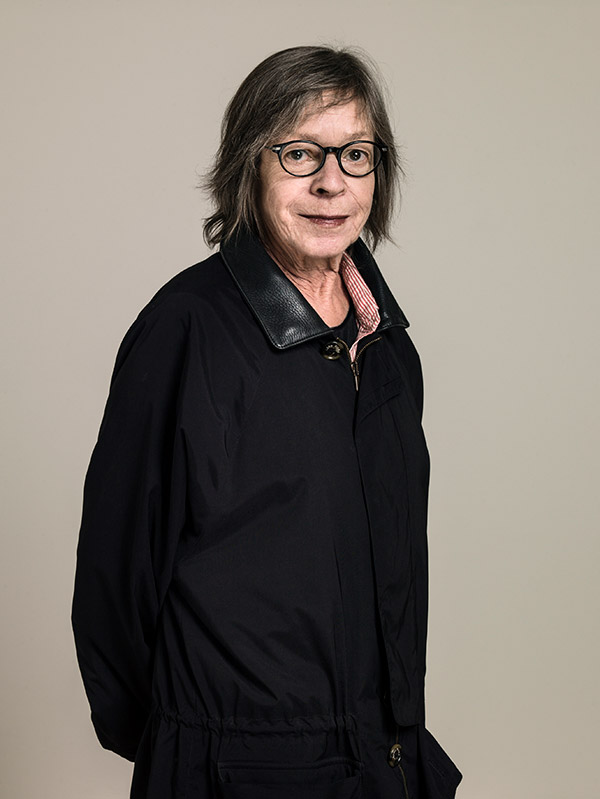One of the best things about being a curator is getting to know artists, and one of the best ways to do it, I find, is in front of a few hundred people in an auditorium. That is how I got to know Susan Rothenberg on March 25, 2010, as we conversed together about her 35-year career for the Elson Lecture at the National Gallery of Art. I really liked her paintings and was thrilled to have two great ones at the Gallery, but I had no idea if I would like her. I tried to get some advance intel from colleagues, with no luck: she had become a bit of a recluse since moving to a New Mexico ranch in 1990 with Bruce Nauman, whom she had married the year before.

Susan Rothenberg, Photograph by Koos Breukel. © 2020 Susan Rothenberg / Artists Rights Society (ARS), courtesy Sperone Westwater, New York
My stage mate was a mystery to me, for a minute. She soon proved to be direct, self-reflective, completely without airs, plainspoken, funny, reticent at times, and deeply in touch with the emotional life that coursed through her work. I was smitten.
There is no video recording of the talk, just audio, which somehow seems more intimate. I remember many of the slides she showed, starting with recent work and then jumping back to early paintings like the Gallery’s Butterfly (1976)—one of the pictures of horses in silhouette that had galvanized the art world with the declaration that it was OK to be a figurative painter, and a painterly painter, at a time when it was barely OK to be a painter at all. She talked about her admiration for Stella, Poons, Giacometti (the sculptures not the paintings), Guston, Graves, Johns, Murray, Jonas. I did not ask the gender question because it did not seem necessary: it was just not her issue, and she had clearly never been much intimidated by anyone, man or woman. Her issue was being human—what it meant to have a body and to be a body among other bodies, including those of animals.
“I tend to want to take things apart after I put them together,” she remarked of a recent painting of disassembled marionettes. I asked her if the puppeteer who sometimes appeared might be a figure for the artist. She replied with a bit of free association that exemplified her intuitive approach: “The manipulator, the maker, the making do.” I asked her what she saw out her studio window, anticipating a picturesque answer about New Mexico mesas. She said, “garbage cans,” adding that she found the desert light much too bright. I had to ask her why she made a series of paintings depicting Mondrian, who had been the subject of my dissertation. She said that a figure in one of her paintings had reminded her of him, and so she “pretended that he came to visit.” There was more, of course: even though Mondrian was “a completely different kind of artist” from her, he was a “searcher,” like all the artists she admired. She regarded Broadway Boogie Woogie (1942–1943), his last finished painting, as one of the greatest of all time: “It’s got rhythm, and blues, it’s got harmony and peace and excitement.” She added that Mondrian was one of those who “got all the way home by the end of their lives.”
I probably should have ended the conversation there but we went on, finishing with what must have been an especially cryptic image on the screen. “What’s that?” I asked about a patch of blue paint that seemed to be depicting something. “I don’t know, I really don’t know,” she answered. Good last words for a brave and honest painter, an extraordinary searcher.